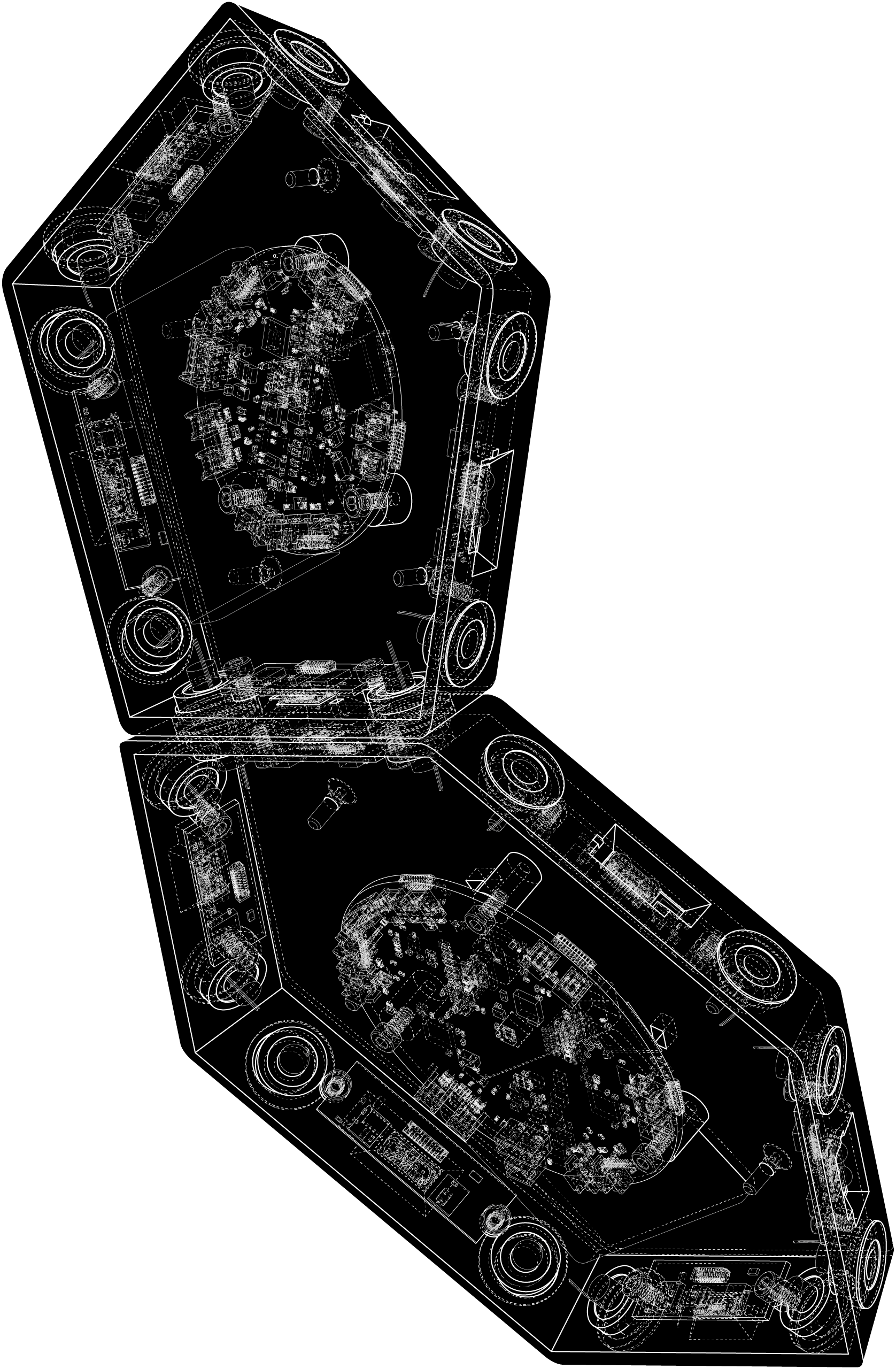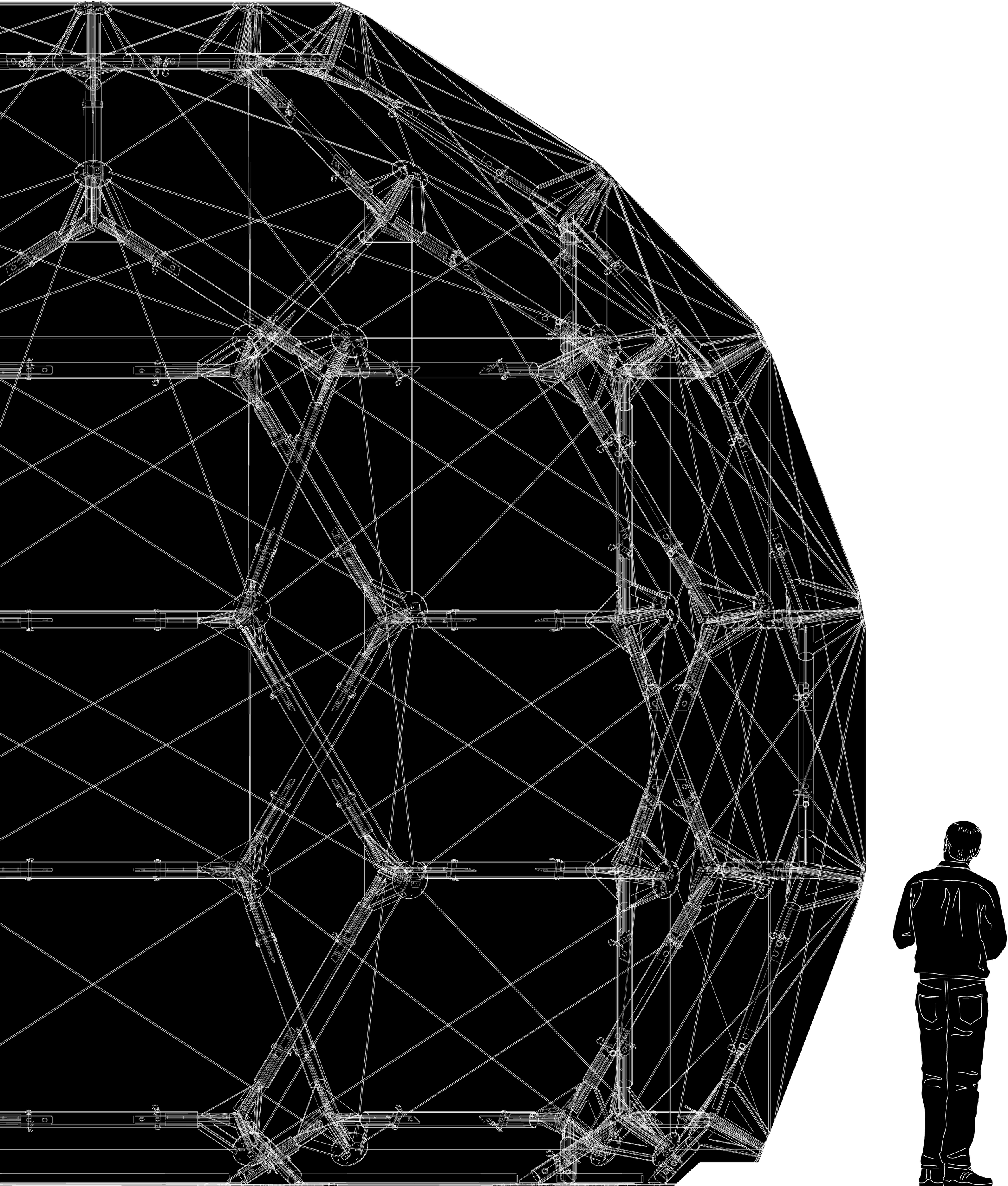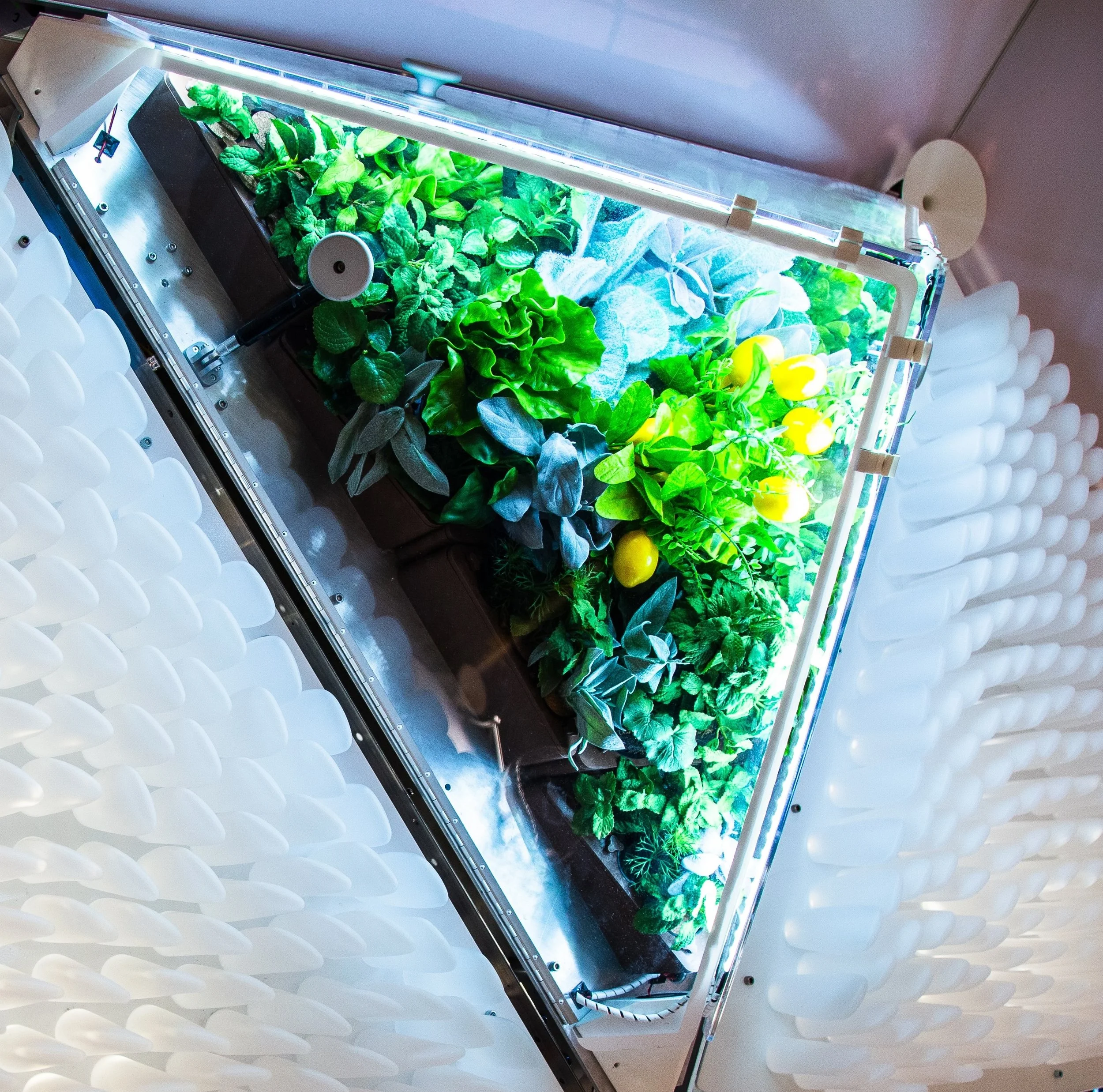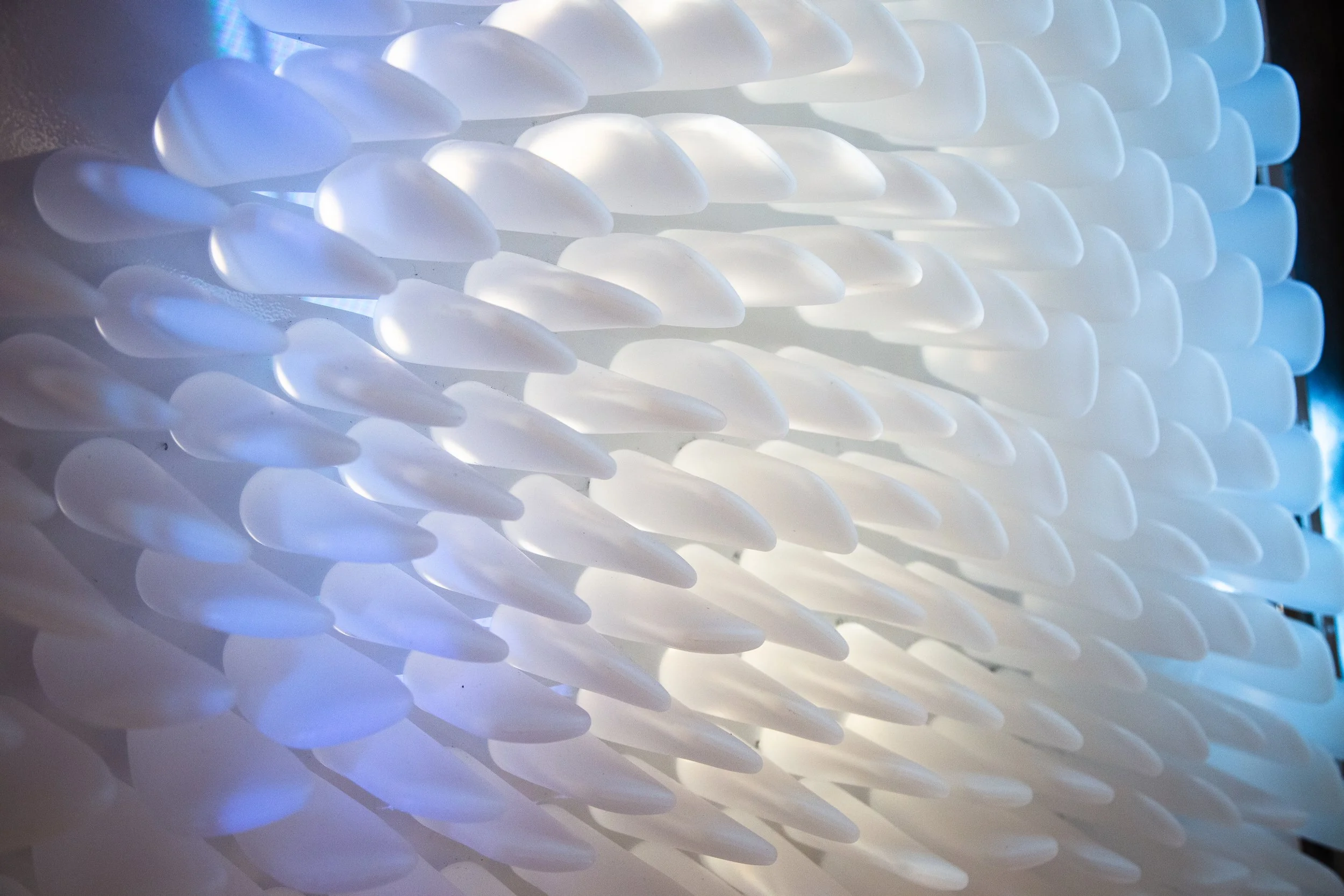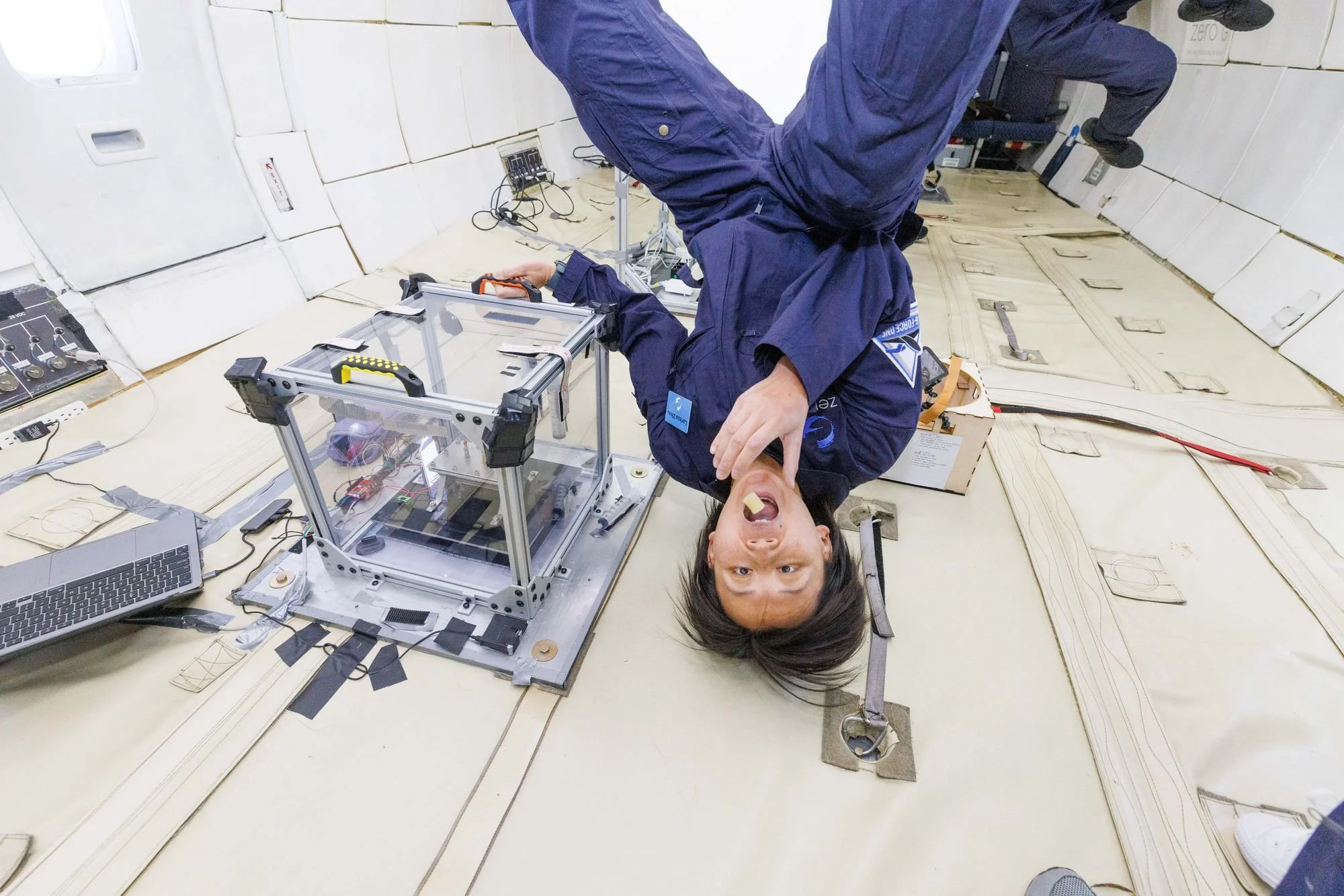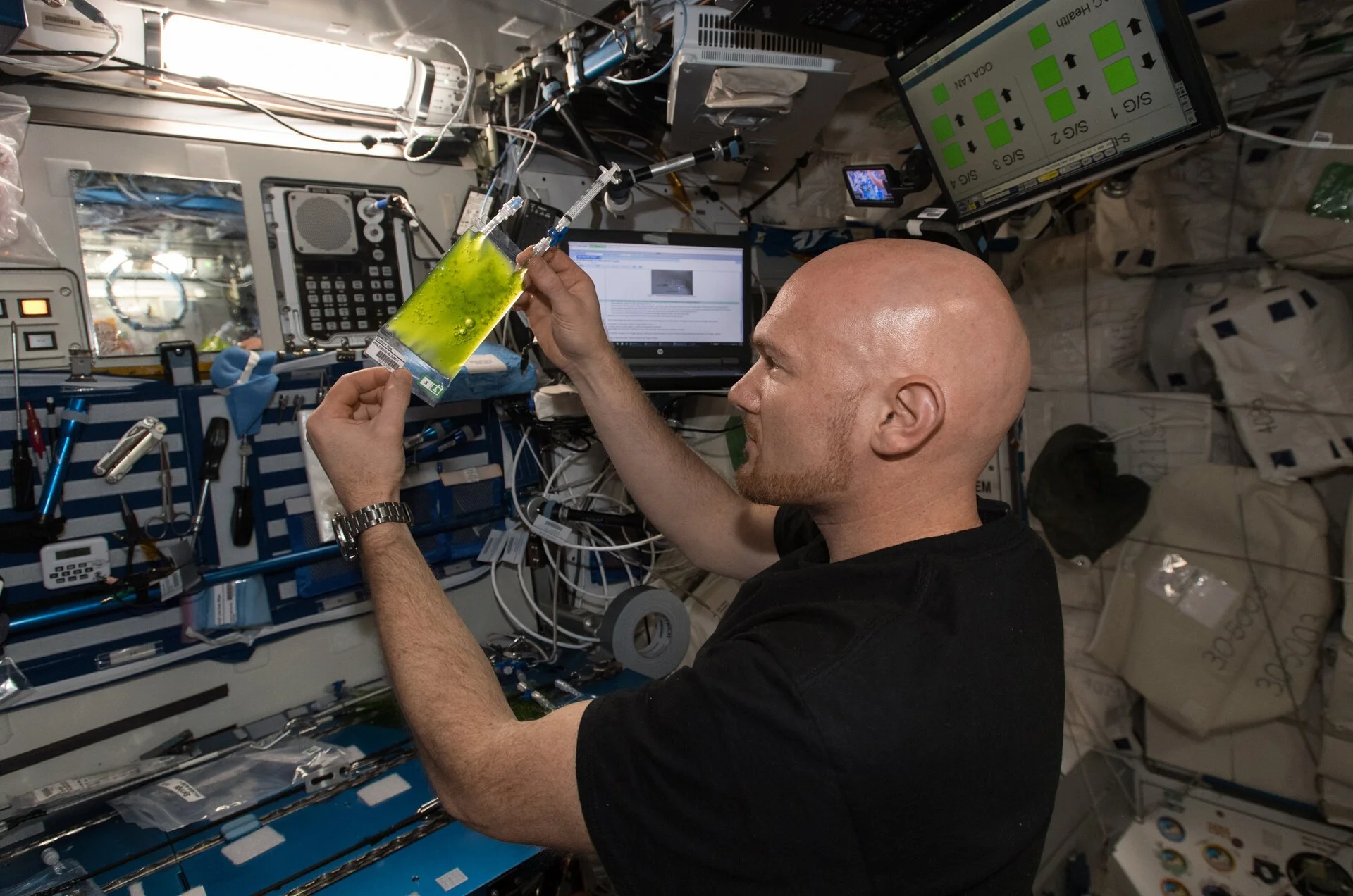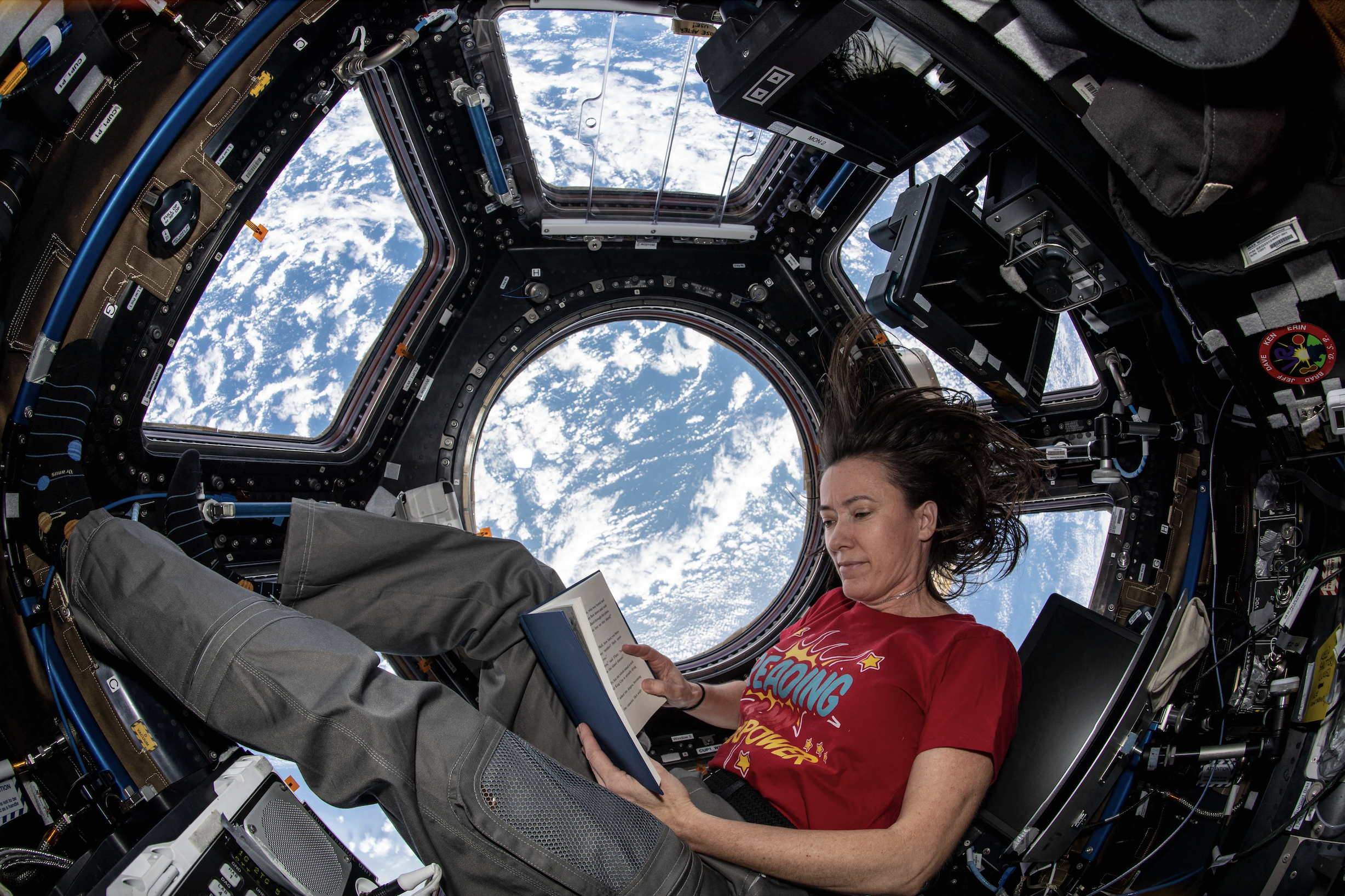TED2025: Humanity Reimagined
TESSERAE Space Habitat Pavilion
As humanity moves closer to becoming a spacefaring species, we will quickly outgrow the small, cylindrical tubes that have defined the first century of space flight.
The TESSERAE space habitat concept (Tessellated Electromagnetic Space Structures for the Exploration of Reconfigurable Adaptive Environments) proposes an alternative to fixed, rigid modules. Geometric tiles, packed flat in a standard rocket, are launched into space; once in low-Earth orbit (LEO), they self-assemble with the help of magnets. The resulting volume, a soccer-ball-shaped truncated icosahedron, is then pressurized and outfitted to house astronauts and researchers — and future spacefarers such as yourself!
Developed by Cambridge, MA-based Aurelia Institute, TESSERAE is brought to life at TED2025 in this true-to-scale space habitat mockup.
This vision of TESSERAE is set in the 2030s, and is one of 3-4 modules that will each form part of a larger space station. This particular module depicts a communal area themed around breaking bread in space: How will we grow, cook, and share meals in space, and how might we foster community and care in orbit?

Inside TESSERAE
Our team of engineers and designers developed a series of modular installations that reflect cutting-edge, real space habitat elements for zero gravity.
As you walk into the dome and turn left, you’ll see a full hexagon panel fitted out with several kitchen features. Designing a zero-g kitchen presents certain challenges — you can’t sit anything down on a horizontal surface! Fluids move differently in microgravity, as surface tension dominates over gravity.
This pavilion model features real, microgravity-tested elements but uses different structural building materials for the outer shell than what will ultimately be used in the vacuum of space.
1 - Aeroponics
The central focus of the kitchen is the “Green Vault”, a functional microgravity-compatible aeroponic garden, testing how to grow fresh produce for astronaut nutrition and biophilia-related mental health. Water and nutrients are pushed through nozzles at a high pressure, reaching plant roots as a fine mist of tiny droplets. This growing method, in use on the ISS, reduces the amount of substrate that needs to be sent up into orbit while supplying astronauts with a steady fresh food source.
Right / below: NASA astronaut Tom Marshburn observes the growth of chili pepper plants in the Advanced Plant Habitat on the ISS (Image: NASA).
2 - Pantry
Surrounding the Green Vault are two pantry tiles, using nature-inspired patterns of phyllotaxis like in sunflowers to produce elegant, tight spaces where food and other preparation materials can be tucked in and securely stored.
Right / below: Astronauts from three countries share a meal in the Unity node galley of the ISS. Food containers are attached to trays by Velcro and the astronauts secure themselves with straps while eating (Image: NASA).
3 - Fermentation & Cooking
The bottom half of the kitchen panel features active cooking elements for life in space. A functional “HøtPøt” or zero-g sous-vide boiler is in the center. Multiple orbs with controllable thermal plates and gas exchange support the fermentation of foods like sourdough, kimchi, miso, and more. These elements have been extensively tested on both zero-g flights and an ISS mission, to inform space-ready designs, and they play a key role in the health and well-being of astronauts which depends on a flavorful, nutritious, and varied diet.
Right / below: Researcher Larissa Zhou tries some pasta boiled in her H0tP0t sous-vide project during a MIT Space Exploration Initiative ‘zero-g’ flight (Image: Steve Boxall / ZERO-G).
4 - Aquaculture
The central feature—a carefully crafted multi-chamber window—posits a future where oxygen-producing algae can be used as part of habitat life support systems to generate breathable air. The green ‘bubble’ chambers surrounding a view of Earth from orbit can house algae and cyanobacteria as part of habitat life support systems. They remove carbon dioxide from the air and generate breathable oxygen through photosynthesis. We hope to show that safe, functional habitat elements can also delight and inspire future spacefarers by invoking the sublime beauty of rose windows on Earth.
Right / below: ESA astronaut Alexander Gerst works on a NASA ‘Space Algae’ experiment on the International Space Station in July 2018 (Image: NASA / ESA).
5 - Wayfinding & Ergonomics
Sea anemone-inspired inflatables and a hand-knotted net (building on traditions from seafaring societies) provide ways to support guided movement, focused work, and relaxation in a large open volume.
Right / below: Nestled amid electronic equipment arrayed around the ISS cupola, NASA astronaut Megan McArthur takes a reading break (Image: NASA).
The Future of TESSERAE
Aurelia Institute is developing the tile hardware platform and testing prototypes at increasing scales in microgravity environments such as the International Space Station.
TESSERAE tile prototypes were flown on the International Space Station in April 2022 as part of Axiom’s first research mission to the ISS.
TESSERAE modules are designed to dock to one another while in orbit, forming larger structures that can accommodate various programs, including research, tourism, and manufacturing.
This exhibit was made possible by the generous support of TED and was created as part of our residency at the Autodesk Technology Center in Boston.



